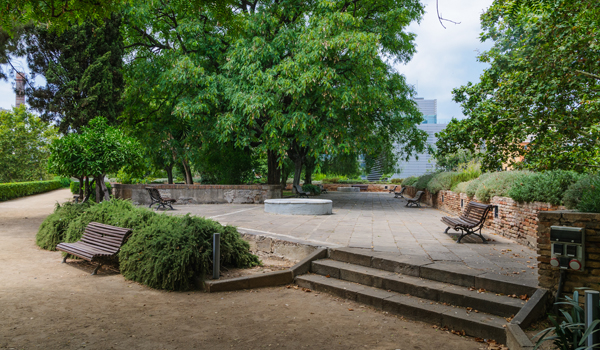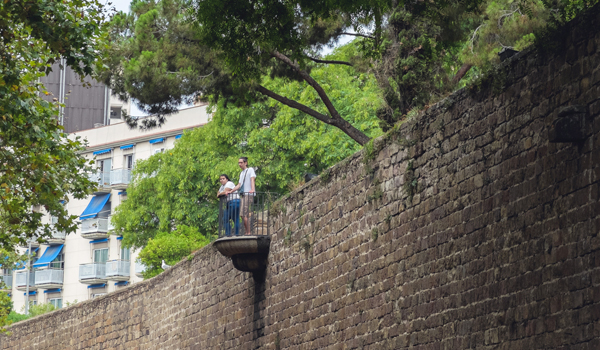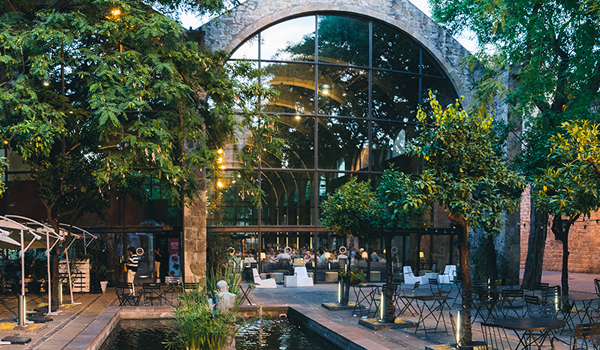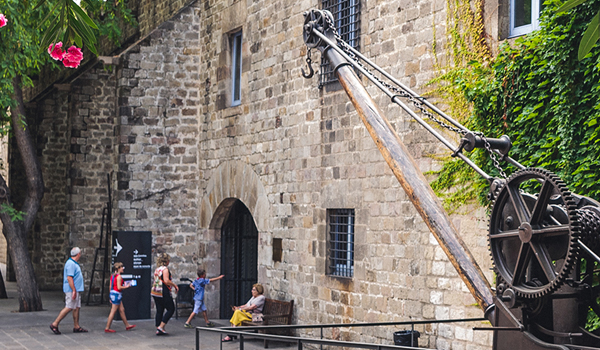The Baluard Garden, the wall and the Gate of Santa Madrona

Pere de Prada i Arana

Pere de Prada i Arana
When the walls surrounding Barcelona began to be torn down in 1854, only one section was preserved: the medieval wall of the Drassanes Reials, the Gate of Santa Madrona and the Bastion of Les Drassanes. Since the complex was still a military facility at the time, this part of the fortifications remained, fortunately, untouched. This stretch of wall from the 14th-15th century is the only section still standing, and it includes two 13th-century towers. It also includes the Gate of Santa Madrona, the only one of the old entrances to the city still remaining from when the city was shut each night to protect or to control the people of Barcelona. The Bastion of Les Drassanes (which is, in fact, half a bastion) is also unique. A defensive structure from the 17th century designed for modern warfare, it is resistant to artillery and is also prepared to act as an easily-defended fortification.
Their military use ended, the wall and bastion have become a garden space that can be visited, a hidden corner of the city where you can stroll and get the feeling you have travelled several centuries back in time. Once again, this garden and the gate are open to the public, who can discover one of the city’s last secret places. The Consortium of the Drassanes Reials manages the space.
The Museum Garden

Pere de Prada i Arana

From 1802 to 1936, the Drassanes Reials de Barcelona served as an artillery arsenal. Its medieval and modern halls were filled with workshops, foundries, storerooms, etc., while the adjacent buildings were primarily used as barracks. What is now the Museum Garden once held outbuildings used as laboratories and for relatively dangerous activities, which is why they were found some distance behind the main facility. When the recuperation of the Drassanes Reials began in the summer of 1936, these buildings were torn down, and the resulting space was landscaped.
Over the years, trees were planted, a pool was added and the space was slowly beautified, until in the ‘90s it was opened to the public as a municipal garden. More recently, with the construction of the restaurant-cafeteria, the Museum entrance, the placement of large pieces like the pilot house of the Sayremar Uno or a port crane, the garden has become a beautiful, welcoming space. Activities are often organized there (especially in spring and summer), and the garden is occupied by the public on weekends. It is now one of the Museum’s “special” spaces.
ROMAN MAUSOLEUM

During the archaeological work carried out in the west hall of the Royal Shipyards (Drassanes Reials) between 2010 and 2012, an area was uncovered that contained a Roman necropolis dating from between the 1 st and the 4 th centuries CE. In light of this discovery, the decision was made to incorporate a rectangular funerary structure – identified as a mausoleum and conserved in situ – into the MMB’s museum display.
The mausoleum structure that you will find on your visit to the MMB halls has a square base measuring approximately 2.1 m by 2.6 m. The structure is made of Montjuïc stone (stoneware), and inside you can see the outlines of where various funeral urns were placed.
The archaeological site is linked to a maritime canal used for entering Barcino. Nineteen burials have been identified, and the same number of cremations, in addition to 11 urns and 3 funerary structures. Two glass urns were found in the mausoleum that contained cremated remains and various ivory, wood and iron items that have been identified as belonging to a funerary bed (lectus funebris).
Classical sources tell us that this type of bed was an object of prestige and great renown, and the status of the deceased was indicated by the materials that were used to make the bed. The tradition of the funerary bed, which derives from the Orient, is found in Egypt and Greece, and it began to spread across the Italic Peninsula with the Etruscans. Most of the remains documented have been dated to between the 3 rd century BCE and the 2 nd century CE, which was when the ritual of burial began to supersede that of cremation. Italy, particularly in the Rome area, is where most remains have been conserved, but there are some from other parts of the Empire, such as Britannia and Hispania. With regard to the latter, examples have been documented in Tarraconensis, Baetica and Lusitania.
This discovery, which is unique thanks to the scarcity of archaeological remains of this type of ritual on the Iberian peninsula, also reveal the extraordinary history of Barcelona’s Drassanes Reials, which exists as a living memory of the city.










